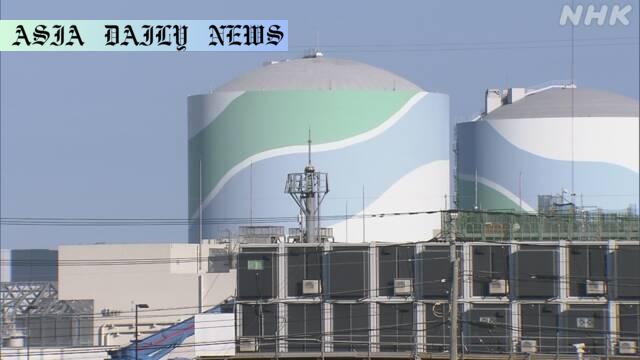Nuclear plant: Kagoshima court rejects lawsuit citing minimal eruption risk, as Sendai extends operational years despite protests.
A Kagoshima court rejected a lawsuit demanding suspension of the Sendai nuclear plant.
The plaintiffs argued that volcanic risk near the plant poses a severe threat.
Court validated operator’s scientific evidence aligning with nuclear standards.
Residents have vowed to appeal the ruling.

Background of the Case
The controversy surrounding nuclear power plants in Japan remains a poignant topic, especially after the 2011 Fukushima Daiichi disaster. Amid public concern about safety, a Kagoshima court in southwestern Japan has rejected a lawsuit seeking the suspension of the Sendai nuclear power plant. This issue reflects the persistent tension between scientific data, regulatory measures, and public sentiment toward nuclear energy operations near hazardous geological areas.
Key Arguments of the Plaintiffs
The lawsuit, which began 13 years ago and has amassed over 3,000 plaintiffs, centers on the potential volcanic risks posed by the plant’s proximity to five calderas. These geological structures have caused massive eruptions in centuries past, and the plaintiffs maintain that the possibility of a similar catastrophic event during the plant’s operational timeline cannot be dismissed. They cite concerns that the current precautions, while scientifically advanced, may not adequately address unpredictable natural disasters.
Court’s Findings and Rationale
The Kagoshima District Court noted that Kyushu Electric Power Company—the entity running the Sendai plant—provided evidence asserting that the likelihood of a large-scale volcanic eruption occurring during the plant’s lifetime is extremely low. The ruling emphasized its adherence to scientific guidelines issued by the Nuclear Regulation Authority (NRA), particularly those introduced as heightened measures post-Fukushima. Moreover, the court stated that projections of potential earthquake intensity surrounding the plant meet regulatory standards, ensuring operational resilience under scenarios currently foreseen by experts.
Impact of Post-Fukushima Regulations
Following the Fukushima Daiichi nuclear disaster in 2011, all nuclear operations in Japan were halted, pending more stringent inspections and regulations. In 2015, the Sendai plant became one of the first to resume operations under these new, more demanding requirements. In 2023, regulators approved 20-year extensions for each of the plant’s two reactors, expanding their operational lifespans beyond the standard 40 years. These developments reflect steps taken to prevent future nuclear incidents while addressing Japan’s energy needs.
Public Reaction and Next Steps
The leader of the plaintiffs, Morinaga Akiko, expressed disappointment in the judgment, claiming it overlooks potential calamities reminiscent of the Fukushima Daiichi tragedy. The group criticized the court’s decision as dismissive of public safety concerns. They now plan to appeal the ruling, continuing their fight to address what they believe are overlooked risks associated with volcanic activity and seismic threats in the region. The verdict has provoked national and international debate about balancing energy requirements with sustainable safety measures in one of the world’s most seismically active regions.
Broader Implications for Japan’s Energy Policies
This decision underscores the Japanese government’s commitment to reinvigorating nuclear energy despite public skepticism. The country’s dependence on imported fossil fuels and the urgency to meet decarbonization goals are compelling Japan to reconsider its nuclear portfolio. However, as seen in Kagoshima, the hurdles are not merely technical—they also involve addressing the fears of communities who bear the brunt of accident risks.
Commentary
The Balancing Act of Nuclear Power
The verdict by the Kagoshima District Court rejecting the suspension of the Sendai nuclear plant highlights the complex challenges of nuclear energy production. On one hand, Japan is under global pressure to fulfill its energy needs without exacerbating climate change. On the other, the public remains deeply scarred by the Fukushima Daiichi disaster, viewing nuclear power through a lens of caution and suspicion. This duality creates a difficult landscape for decision-makers tasked with balancing safety and sustainability.
Concerns of Local Communities
For residents near the Sendai nuclear power plant, the decision may feel like an affront to their safety concerns. The argument about potential volcanic disasters raises significant questions about the scope of risk analysis, particularly in a region prone to earthquakes and eruptions. While scientific evidence provided by operators appears robust, the inability to completely eliminate the ‘what if’ scenario troubles civilians who must coexist with the looming reality of nature’s unpredictability.
A Broader Conversation on Energy Policy
Ultimately, this case serves as a microcosm of global energy debates. Can nuclear energy, with its potential dangers, serve as a credible bridge between fossil fuels and renewable alternatives? And, how can governments and companies align with public confidence while accelerating innovation? Japan’s pathway forward will attract scrutiny, both from environmentalists and energy economists eager to see how it balances technology, safety, and public trust.
Call for Transparent Communication
In moving forward, fostering open and transparent communication between stakeholders—including plant operators, regulators, and local residents—will be critical. While courts may side with scientific assessments, the human element cannot be dismissed. Governments must work harder to bridge this divide, ensuring that the voices of communities are reflected in the policies that affect them most sensitively.


